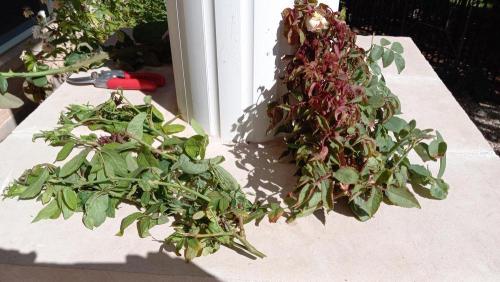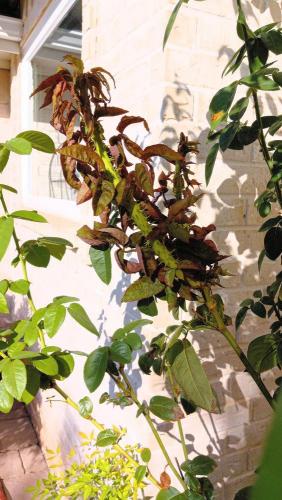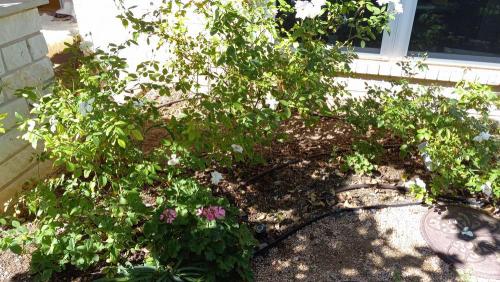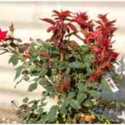I've been growing roses in various states of U.S. for over 50 years without serious disease problems. When we moved to Texas 20 years ago I became a TX Master Gardener for 13 years. Four years ago we moved to our present house and I started a new rose garden. I brought one rose, Double Delight, from old house and purchased a Chicago Peace and Kordes Savannah. These 3 are planted in front of dining rm. window and have been thriving very well for over 3 years. This September I saw a new stem on Peace rose that was very odd, much thicker, covered with extreme thorns and dark red leaves on curled stems at the top. I did not know about rosette disease so I decided to prune that stem and watch new growth on 3 roses.
Within a week or so I saw a couple stems on the Savannah with same problem. That's when I decided to search online and learned about this dreadful disease. There is so much to learn!
There is a multi-state initiative to develop disease resistant cultivars. It consists of 21 researchers from Texas A&M; the University of Minnesota; the University of Tennessee; USDA-Agricultural Research Service, Beltsville, Maryland; the University of Tulsa; Oklahoma State University; the University of Georgia at Athens and Tifton; The Ohio State University; and the University of Wisconsin, River Falls. Follow the research and news of the USDA Specialty Crops Research Initiative battling rose rosette, on their Facebook page.
Last spring I planted 2 more Iceberg shrubs to go with 1 planted previous year in another spot nearby. About a week ago I noticed one stem with telltale thickened growth and lots of thorns on the Iceberg shrub. In another corner of front yard are 3 quite small shrubs of Rosa Meidriflora. I had seen some unusual growth on the tops of one of these about a month ago but didn't think to do anything about it. My suspicion is that these may be where the virus came from in my yard. If you read gemini_sage's detailed description of rosette virus, it tells what he did and now, I'm quite sure that is what is in store for my roses. They are entering a profuse bloom season from now until frost, that could be in January. Our winters have been very mild lately.
I will monitor them daily and prune any suspicious new growth. The Meidriflora are removed and destroyed. I will continue to fertilize, spray and PRAY that I can perhaps delay their ultimate demise. There's a website that allows you to put information about your roses that may have RRD. Location, etc. I found it on the Combating Rose Rosette on facebook.










